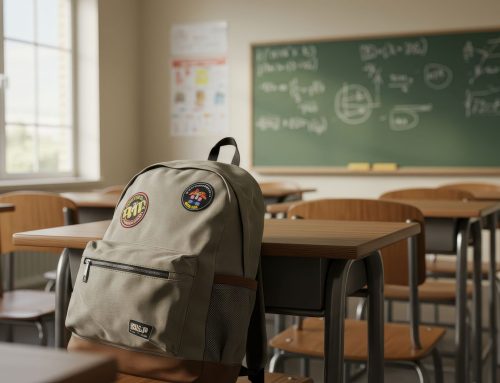As noted in this month’s Director’s Desk article, Thanksgiving, Food Insecurity, and Politics, it is estimated that 7.2 million children in the U.S. live in households in which children, along with adults, are food insecure, and over 800,000 children – 1.2% of the Nation’s children – live in households where one or more children experience very low food security (USDA, 2023).
Several federal programs are designed to support families who face food insecurity, including the Supplemental Nutrition Assistance Program (SNAP), formerly known as the Food Stamp Program, and the Supplemental Nutrition Program for Women, Infants, and Children (WIC). Additionally, the National School Lunch Program (NSLP) and the School Breakfast Program (SBP) provide vital meals to children from low-income families during the school day.
The NSLP is the nation’s second-largest food and nutrition assistance program behind SNAP. The large majority of schools, over 94,000, participate in the NSLP. In 2023-24, the NSLP served nearly 29.4 million children, with 21.1 million children receiving a free or reduced-price lunch on a typical day (FRAC, 2024).
Similarly, the large majority of schools, over 91,000, participate in the School Breakfast Program (SBP), which serves approximately 15 million students (USDA, 2025).
According to research by the USDA, SBP participation by children from low-income households continues to be less than participation in the NSLP for a variety of reasons, including a “perceived stigma associating school breakfast participation with poverty” (USDA, 2025). Other factors include “logistical challenges with early school start times and bus schedules, as well as a lack of student awareness about the benefits of the breakfast program” (FRAC, 2025).
Eligibility
Children may be determined “categorically eligible” for free meals through participation in certain Federal assistance programs, such as the SNAP and Head Start, or based on their status as a homeless, migrant, runaway, or foster child. Children can also qualify for free or reduced-price school meals based on their household income and family size. Children from families with incomes at or below 130 percent of the Federal poverty level are eligible for free meals. Those from families with incomes between 130% and 185% of the federal poverty level are eligible for reduced-price meals and pay a maximum of 40 cents per meal.
[Find more information about the Income Eligibility Guidelines here.]
The Community Eligibility Provision (CEP) allows the nation’s highest poverty schools and districts to serve breakfast and lunch at no cost to all enrolled students without collecting household applications. Instead, schools that adopt CEP are reimbursed based on their participation in other specific means-tested programs, such as the SNAP and Temporary Assistance for Needy Families (TANF) programs (USDA., n.d.).
Challenges & Issues:
To overcome some of the barriers concerning the SBP, many schools have implemented in classroom, grab-and-go breakfast items (USDA Fact Sheet, 2020). This approach addresses issues such as a lack of time in the morning or difficulty with bus schedules.
Other issues with school breakfast and lunch programs include the nutritional value of the food and the students’ willingness to participate. Of course, another concern today is the cuts to federal programs, as eligibility for the school breakfast and lunch programs is, in part, dependent on eligibility for other programs, such as SNAP and TANF.
Nutrition
The NSLP and SBP, administered by the U.S. Department of Agriculture (USDA), provide breakfasts and lunches that are required to meet federal nutrition standards. Several studies suggest that a nutritious breakfast is particularly important for overall health. For children aged 6-11, a healthy breakfast provides between 18-19% of total daily energy intake, and an even greater proportion of daily intake of several nutrients of public health concern, including vitamin D (40-42%), calcium (26%), fiber (21%), and iron (32%).
Breakfast consumption has been positively associated with academic outcomes (Rampersaud et al., 2005; Adolphus et al., 2013; Hoyland et al., 2009). Conversely, studies have shown that skipping breakfast has been linked to a significantly lower likelihood of meeting recommended nutrient intakes, poorer memory, and an increased risk of obesity. Unfortunately, 12-34% of US children report skipping breakfast. Furthermore, consistent with previous studies, even when the schools had a universal breakfast policy, fewer than half of the children ate school breakfasts (Polonsky et al., 2018).
Polonsky’s research on “low-income ethnically diverse children in public urban schools” also found that the quality of meals “varies with the location” (e.g., home, neighborhood store, school). For example, school breakfast was positively associated with fruit and vegetable (FV) intake, which was primarily due to children’s consumption of 100% fruit juice. Further, children who ate exclusively at school were more likely to consume breakfasts that met the meal component requirements of the SBP. Finally, children who ate breakfast at school were less likely to consume foods high in Saturated Fatty Acids (SFAs) than children who ate only at home. Consumption of SFA foods was most pronounced among those children who ate at “corner stores,” which is important given the role of SFAs in weight management and chronic disease risk. Consistent with previous studies, “nutrient-dense foods like cereal, milk, and FV” are among the most frequently consumed breakfast foods at school. “Taken collectively, these findings suggest that school breakfast may have some potential nutrition benefits for urban youth relative to eating breakfast at other locations” (Polonsky et al., 2018).
The latest iteration of the Dietary Guidelines for Americans (2020–2025) recommends limiting added sugars to less than 10% of daily calories. However, 70 to 80 percent of children aged 5 to 18 exceeded the recommended limit (USDA, 2020). Further, a 2022 USDA report to Congress found that 69 percent of schools prepared lunches with 10% or more of calories from added sugars. The primary source of added sugars was flavored fat-free milk, which contributed 47% of the added sugars in lunches. The report also found that 4 of the 10 most frequently offered food items in school lunches contained more added sugars than recommended. These include canned fruit, crispy rice cereal bars, low-fat cookies, and low or reduced-fat ice cream, frozen yogurt, or sherbet (USDA, 2022). To align NSLP nutrition standards with the most recent edition of the Dietary Guidelines for Americans, the USDA issued updated standards in 2024 that gradually impose additional limits on sodium and introduce restrictions on added sugars (USDA, 2024).
Of course, access is a critical issue concerning school meals, despite the number of schools adopting universal free meals increasing significantly since the passage of the 2010 Healthy, Hunger-Free Kids Act (Billings & Carter, 2020). Assumed benefits of the policy include increased student participation in school meal programs, decreased financial burden on families, elimination of unpaid meal charges, reduced administrative burden, and increased revenue (Murdoch et al., 2022).
The expiration of the COVID-19 pandemic waiver (which allowed access to nutritious meals while schools were closed) led some states to adopt their own universal free meal policies. As of 2023, eight states had authorized funding to permanently subsidize free school meals for all students, and others are considering doing the same (School Nutrition Associate, 2023).
One study using 2021-2022 Household Pulse Survey data found that households with school-aged children in states that adopted statewide universal free meal policies were more likely to report that their children participated in school meal programs and less likely to report that their children “sometimes or often did not have enough to eat, compared to states without these policies” (Toossi, 2024).
At the federal level, in 2023, the USDA issued a new policy lowering the Identified Student Percentage (ISP) threshold for CEP from 40% to 25% (USDA FNS, 2023). The lower threshold made more schools and school districts eligible to offer free meals to all students (Toossi et al., 2024).
Although many school districts implemented summer food programs during the COVID-19 pandemic through federal reimbursement waivers, access to food programs is generally limited to when schools are in session. While summer food programs are available in some locations, they are “far from universal and typically smaller in scale when offered.” In addition, summer programs are often not available at the same locations as children’s regular schools, which reduces families’ ability to take advantage of them. Bitler et al. (2025) found that in 2023, only 2.2 million children received meals daily from the federally funded Summer Food Service Program, compared with over 20 million children who received free or reduced-price lunches during the school year (USDA, 2024).
References:
Adolphus K., Lawton C., & Dye L., 2013. The Effects of Breakfast on Behavior and Academic Performance in Children and Adolescents. Frontiers in human neuroscience.
Billings, K., 2025. School Lunch and Breakfast Participation: A Snapshot of Recent Trends. CRS Report R48515, Version 4. Congressional Research Service.
Bitler, M., Currie, J., Hoynes, H., Ruffini, K., Schulkind, L., & Willage, B. (2025). Effects of school meals on nutrition: Evidence from the start of the school year. Food Policy, 134, 102901.
Cullen, K. & Chen, T., 2017. The contribution of the USDA school breakfast and lunch program meals to students’ daily dietary intake. Preventive medicine reports, 5, 82-85.
Forbes, 2025. Kafarakis, P.
Don’t Starve the Data: Why Reporting on Hunger Matters.
FRAC, 2024. Crystal FitzSimons, C. Food Research & Action Center (FRAC).
https://frac.org/news/usdafoodsecurityreportsept2024.
FRAC, 2024. National School Lunch Program. Food Research & Action Center (FRAC).
https://frac.org/programs/national-school-lunch-program.
FRAC, 2025. Crystal FitzSimons, C. Food Research & Action Center (FRAC).
USDA’s Decision to End 30-Year Food Security Report Will Hide the Struggle of Millions of Families to Put Food on the Table. https://frac.org/news/foodsecuritysurveyterminationsept25
FRAC, 2025. The Reach of School Breakfast and Lunch During the 2023–2024 School Year. WWW.FRAC.Org.
Guthrie, J, 2020. Free School Lunch, Breakfast Participation Rose Between 2009 and 2019. Amber Waves. USDA. Economic Research Service. U.S. Department of Agriculture.
Hoyland A, Dye L, & Lawton C., 2009. A systematic review of the effect of breakfast on the cognitive performance of children and adolescents. Nutrition research reviews.
Kaiser, R. & Hamlin, D., 2024. The national school lunch program and healthy eating: An analysis of food selection and consumption in an urban Title I middle school. Education and Urban Society, 56(2), 143–163.
Lawman H., Polonsky H., & Vander Veur, S., 2014. Breakfast patterns among low-income, ethnically diverse 4th-6th grade children in an urban area. BMC Public Health.
Leider, J., Lin, W., Piekarz-Porter, E., Turner, L., & Chriqui, J., 2020. The Role of District Wellness Policies in Encouraging Student Participation in the School Breakfast Program in the United States. Nutrients, 12(8), 2187.
Nicklas T., O’Neil C., & Myers L., 2004. The importance of breakfast consumption to the nutrition of children, adolescents, and young adults. Nutrition today.
NY Times, 2025. DeParle, J. Trump Administration to Stop Measuring Food Insecurity.
Palmer, S., Burton-Obanla, A., Goon, S., Allison, T., Mitchell, A., Bogdonas, K., & Prescott, M., 2024. Policy, systems, and environmental changes in child nutrition programs: a systematic literature review. Advances in Nutrition, 15(1), 100116.
Polonsky, H., Davey, A., Bauer, K., Foster, G., Sherman, S., Abel, M., Dale, L., & Fisher, J., 2018. Breakfast Quality Varies by Location among Low-Income, Ethnically Diverse Children in Public Urban Schools. Journal of Nutrition Education & Behavior.
Rampersaud, G., Pereira, M., Girard, B., Adams, J., & Metzl, J., 2005. Breakfast habits, nutritional status, body weight, and academic performance in children and adolescents. Journal of the American Dietetic Association.
Ritchie L., Rosen N., Fenton K., Au L., Goldstein L., & Shimada T., 2015. The School Breakfast Policy is Associated with the Dietary Intake of Fourth- and Fifth-Grade Students. Journal of the Academy of Nutrition and Dietetics.
Szajewska, H. and Ruszczynski, M., 2010. Systematic review demonstrating that breakfast consumption influences body weight outcomes in children and adolescents in Europe. Critical Review in Food Science.
Toossi, S., Todd, J. E., Guthrie, J., & Ollinger, M., 2024. The National School Lunch Program: Background, Trends, and Issues.
USDA, 2021. National School Lunch Program. Food and Nutrition Service. U.S. Department of Agriculture. https://www.fns.usda.gov/fns-101-nslp
USDA, 2022. U.S. Department of Agriculture, Food and Nutrition Service. Added sugars in school meals and competitive foods
USDA FNS, 2023. Final Rule: Nutrition Programs – CEP Increasing Options for Schools. https://www.fns.usda.gov/cn/fr-092623
USDA, 2023. USDA Economic Research Service using U.S. Department of Commerce, Bureau of the Census, 2023 Current Population Survey Food Security Supplement Data.
USDA, 2023. Food Security in the U.S. Key Statistics & Graphics. USDA Economic Research Service using U.S. Department of Commerce, Bureau of the Census, 2023 Current Population Survey Food Security Supplement Data.
https://www.ers.usda.gov/topics/food-nutrition-assistance/food-security-in-the-us/key-statistics-graphics
USDA, 2024. U.S. Department of Agriculture, Food and Nutrition Service. Updates to the school nutrition standards.
USDA, 2025, Evaluation of the School Breakfast Program Pilot Project: Findings from the First Year of Implementation. https://www.fns.usda.gov/research/cn/evaluation-school-breakfast-program-pilot-project-findings-first-year-implementation#
USDA, n.d. Food and Nutrition Service Child Nutrition Programs: Meal Patterns Consistent With the 2020–2025 Dietary Guidelines for Americans.
Van Wye G., Seoh H., Adjoian T., & Dowell D., 2013. Evaluation of the New York City breakfast in the classroom program. Am J Public Health.
Wesnes K., Pincock C., Richardson D., Helm G., Hails S., 2003. Breakfast reduces declines in attention and memory over the morning in schoolchildren. Appetite.







